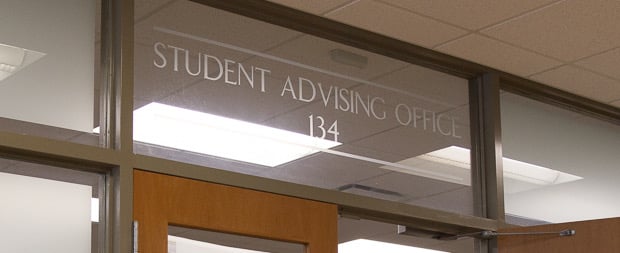
Reviewing Mixed News on the Implementation of Lame-Duck Passed Bills
Before the holiday break, the Michigan Legislature concluded its lame-duck stretch with a marathon of voting where Michigan Democrats sought to make up for a chaotic final few days of this period that stunted their ability to complete their envisioned closing legislative agenda (December 2024 Capitol Perspectives; The Detroit Free Press). In early January, “Michigan’s 103rd Legislative Session kicked off” with Republicans taking control of the Michigan House by a margin of 58-52 and Democrats still holding power in the Michigan Senate, albeit now with a 19-18 split due to one vacant seat based on the election of Kristen McDonald Rivet (D – Bay City) to the U.S. House of Representatives (MASA 1/10 Legislative Update; Michigan Advance; WCMU). As noted in the November 2024 Capitol Perspectives, Republicans’ ability to “wrest back control of Michigan House” is expected to “check…Democratic Gov. Gretchen Whitmer’s power” on policy issues related to K-12 education and more broadly, given the need for Senate-approved bills to also survive the Michigan House (Michigan Advance). Less predictably, though, this month saw the Democrats in the Michigan Senate and Republicans in the Michigan House square off, not over new legislative priorities, but rather over bills passed during the lame-duck session.
Specifically, “a total of nine bills, including House Bill 6058,” which “propos[es] significant changes to the PA 152 law governing public employee health care contributions” were not “sent to the Governor for her signature due to an unspecified legal review” initiated by the Speaker of the House, Matt Hall (R – Richland Township), despite the legislation’s December approval by the Michigan House and Senate (MASA 1/10 Legislative Update; December 2024 Capitol Perspectives; The Detroit Free Press). Reflecting on why Speaker Hall could initiate this review, political commentators have pointed out that after the measures passed the Michigan Senate, “former House Speaker Joe Tate, D-Detroit, did not send [Governor] Whitmer the bills when he could” (Bridge). Most relevant for K-12 education, should House Bill 6058 ultimately be sent to Governor Whitmer and signed, it would mandate that “public employers, including public school districts and local governments…pay at least 80% of employee health care costs,” effectively meaning that “public employee unions [will] have more ability to collectively bargain their members’ health insurance costs” (Detroit Regional Chamber; The Detroit Free Press).
In advocating for Speaker Hall to dislodge the stalled bills, groups like the Michigan Education Association have argued that the legislation covering health care costs is an especially important reform to finalize to prevent “an exodus of educators” due to “dramatic spikes in out-of-pocket health care costs” (MEA). With that, towards the back half of January, hoping to spark the release of HB 6058 and the other paused bills, “the Democratic Senate laid the groundwork to file suit…by passing a resolution allowing Senate Majority Leader Brinks (D) to take legal action to compel the House to send the bills to the governor” (MASA 1/24 Legislative Update). Rather than catalyzing the enactment of this legislation, though, the move caused Speaker Hall to warn that “Senate-led bills may have trouble in the House if legal action is pursued” (MASA 1/24 Legislative Update). Concerning potential litigation on the Republicans’ legislative impoundment, the Michigan Constitution says that “‘every bill passed by the Legislature shall be presented to the governor before it becomes law” (Bridge). That said, there is significant ambiguity about what exactly such language requires Speaker Hall to do in this case. As such, it is unclear when, if ever, these lame-duck policies could see the light of day.
Importantly, while these bills have stalled, despite their past passage, January did see Governor Whitmer approve a collection of bills from the lame-duck session that were sent to her. For one, right before the calendar turned to 2025, Governor Whitmer signed HB 5649, which mandates that “public high schools…offer a computer science course without adding a graduation requirement” (MASA 12/13/24 Legislative Update). With that, Governor Whitmer greenlit a collection of “education-related bills [HB 5231, HB 5232, HB 5233, HB 5234, and HB 5269]” to mandate that “Michigan charter schools…publicly post average teacher salaries” and “the names of their primary educational management organizations, or EMOs, and authorizing bodies” (Chalkbeat Detroit; Chalkbeat Detroit; The Detroit Free Press; Michigan Public Radio). Further, Governor Whitmer finalized some school safety legislation (Chalkbeat Detroit). The nineteen approved bills “require schools to have a behavior threat assessment and management team, create a new state commission on school safety and mental health, and add new rules to make sure schools are able to respond effectively to safety threats” (Chalkbeat Detroit). Additionally, as featured in the December 2024 Capitol Perspectives, HB 5450 and HB 5451 “[require] the Michigan Department of Health and Human Services (MDHHS) to create materials for schools to distribute to inform parents about the safe storage law” for guns (The Detroit Free Press). When the new Michigan Legislature begins conducting its own business, it will be featured in future editions of Capitol Perspectives.
Unpacking Uncertainty Tied to President Trump’s Education-Related Executive Actions
The November 2024 and October 2024 Capitol Perspectives offered some predictions of what November’s elections, including the one for President of the United States, could mean for the future of K-12 education in Michigan and nationwide. Throughout this month, President Trump made clear his vision for schooling. Most centrally for educators and administrators, at the end of January, President Trump signed a collection of executive orders that seek to “remake public education in the image of his ‘anti-woke,’ populist political movement” by “threatening [districts’] federal funding” if they “recogniz[e] transgender identities or [teach] about concepts such as structural racism, ‘white privilege’ and ‘unconscious bias,’” requiring “‘patriotic’ education,” and “direct[ing] a swath of federal agencies to look for ways to expand access to private school vouchers” (The New York Times).
In terms of the executive action relating to how social and historical topics are discussed, President Trump’s advocates have argued that “there’s a risk to social unity if people are exposed to too much of the darker sides of our history,” that current curriculum distracts from core subjects, and that parents should guide such conversations (Bridge). Critics say the policy infringes on the rights of states and localities to determine what is taught and has a “chilling effect” that prevents educators from covering important topics (Bridge). Concerning the school choice executive order, reactions were predictably mixed, with critics calling it “a direct attack on all the parents and the families and the kids who” attend public schools, while supporters said it was an essential signal that President Trump would give parents “greater control over their children’s education” (NPR). Looking ahead, the material impacts of these orders are potentially muted given that “states and localities provide 90 percent of the funding for public education…and have the sole power to set curriculums, tests, teaching methods and school-choice policies” (The New York Times). Further, Congress controls “the major funding stream that supports public schools, known as Title I…and the president has little power to restrict its flow” (The New York Times). However, the release of these executive orders signaled where President Trump hopes to take K-12 education, and as such, it created significant debate among education stakeholders.
Second, more tangentially connected to K-12 districts but still relevant for teachers and school leaders, President Trump clarified that his administration “would allow federal immigration agencies to make arrests at schools, churches and hospitals, ending a policy that had been in effect since 2011” (AP). Opponents of this approach argue that it robs parents of a safe place to send their children, “upend[s] education for thousands of Michigan students,” creates tremendous “uncertainty” for teachers and school leaders, chills students’ attendance, “by extension, [negatively impacts] student achievement,” and risks “racial profiling…lead[ing] to…unlawful detention” (Chalkbeat Detroit). On the other hand, the Trump administration framed it as a necessary measure to identify and deport undocumented immigrants (Chalkbeat Detroit). To support educators and administrators trying to make sense of this policy change, the School Superintendents Association released a relevant memo (MASA 1/24 Legislative Update). Relatedly, the Michigan Department of Education published an initial memo and an updated one in January that reaffirms schools’ “legal responsibility to provide public education to students regardless of their immigration status” based on the Plyler v. Doe U.S. Supreme Court case and the Michigan Elliott Larsen Civil Rights Act (Chalkbeat Detroit). As with other policies, “the order will likely be challenged in court,” which means “it may take months for a legal resolution” (Chalkbeat Detroit).
Finally, this month brought added conversations about the role of the federal government in supporting the provision of K-12 education. Previously, S.5384, the Returning Education to Our States Act, was introduced in Congress to abolish the U.S. Department of Education and “reassign the agency’s functions” (Chalkbeat Detroit). While this bill has a very low probability of success, given the “Senate filibuster,” basically “no Democratic support for that idea, and…Republican opposition too,” President Trump “could… strip the department of funding and replace its career employees with political appointees” while deemphasizing certain functions like the “enforcement of federal civil rights laws in local schools” (The Hill; PBS News; Chalkbeat Detroit). Similarly, the arrival of the Trump administration might mean greater scrutiny of already-limited federal spending on K-12 education. For instance, the end of January brought a chaotic series of events related to this topic and federal grants. In short, the White House Office of Management and Budget (OMB) announced a “federal funding freeze” impacting a massive tranche of federal spending (though not certain education spending), “panic and confusion” ensued, a federal judge “temporarily blocked” the measure that covered “potentially trillions of dollars,” and the OMB “rescinded” its document (AP; MASA 1/29 Special Legislative Update). That said, “the White House Press Secretary quickly clarified via social media that only the Memo was rescinded, stating: ‘This is NOT a rescission of the federal funding freeze’” (MASA 1/29 Special Legislative Update). Consequently, the future of various education-related grants remains up in the air. Meanwhile, on this topic and others, “many Michigan education leaders [are left] uncertain” (Bridge).
Setting the Stage for Spring and Summer Budget Debates
Annually, the January Consensus Revenue Estimating Conference (CREC) “mark[s] the start of budget season with a report from the State Budget Office, along with both the House and Senate Fiscal Agencies” (MASA 1/10 Legislative Update). The data shared at this event is so essential to the budget process because “Gov. Gretchen Whitmer and the Legislature are required to use the numbers adopted” in developing their proposals (WDET). Almost uniformly, “revenue estimates [were] significantly higher than economists anticipated back in May” (MASA 1/10 Legislative Update). Representatively, the projected revenue available for the FY 2024-25 School Aid Fund was “$18.5 billion – a 2.1% increase ($374.2 million) from the previous year and a $312 million increase from May 2024 estimates,” and the resources available for the FY 2025-26 and FY 2026-27 School Aid Funds are expected to balloon to $18.9 billion and $19.4 billion, respectively (MASA 1/10 Legislative Update). If there was worrying news out of the “rosier” meeting, it involved “student pupil counts” that “are projected to continue declining over the next few years” (WCMU; MASA 1/10 Legislative Update). These enrollment figures are important for school funding because districts receive funding on a per-pupil basis, where more students mean ultimately more money.
Regarding the next steps in the budget process, Governor Whitmer will use these projections “to shape her budget priorities, which she is scheduled to present on Feb. 6,” and “her State of the State address,” which “is scheduled later than usual this year, on Feb. 26” (MASA 1/10 Legislative Update). One item expected in Governor Whitmer’s budget proposal and State of the State is a new “‘SMART’ plan to increase school transparency and boost funding” (Bridge; Chalkbeat Detroit). In terms of policy details, the proposal is rumored to “award districts for increasing parental communication about student outcomes, increase per-pupil funding, double funding for literacy grants and invest more in mental health and school safety” (Bridge). As she advocates for this reform, Governor Whitmer is likely to point to new data that “Michigan students stagnated in performance in reading and math in a critical national assessment taken every two years, largely making no significant gains — or sustaining significant losses — since a drop in scores following the pandemic” (The Detroit Free Press).
The politics of this budget rollout will likely be tricky. Because of the changed margins in the Michigan House, “Republicans will have more leverage” in this budget process (Chalkbeat Detroit). Thus, all eyes are likely to be on House Republicans’ reaction to Governor Whitmer’s proposal and what is included in their “own budget proposal,” which will be released in the next few months (Bridge). If early statements are any indication, conservative leaders are likely to argue that lawmakers need to ensure schools are prioritizing curriculum essentials rather than what they label “woke DEI nonsense” and that rather than creating a new system, Michigan Democrats should have maintained the A-F accountability system they repealed in 2023 (Bridge). More generally, Republican leaders have indicated that “they would like to see [Michigan’s] surplus directed toward fixing roads and a tax cut” (WDET). To the extent that readers want to prepare for these budget debates, they are encouraged to review last year’s coverage in Capitol Perspectives. With that, they can delve into deeper school funding content via the Office of K-12 Outreach’s video series with Dr. David Arsen on this topic.
For questions or more information, please contact Tyler Thur in the Office of K-12 Outreach at thurtyle@msu.edu.




